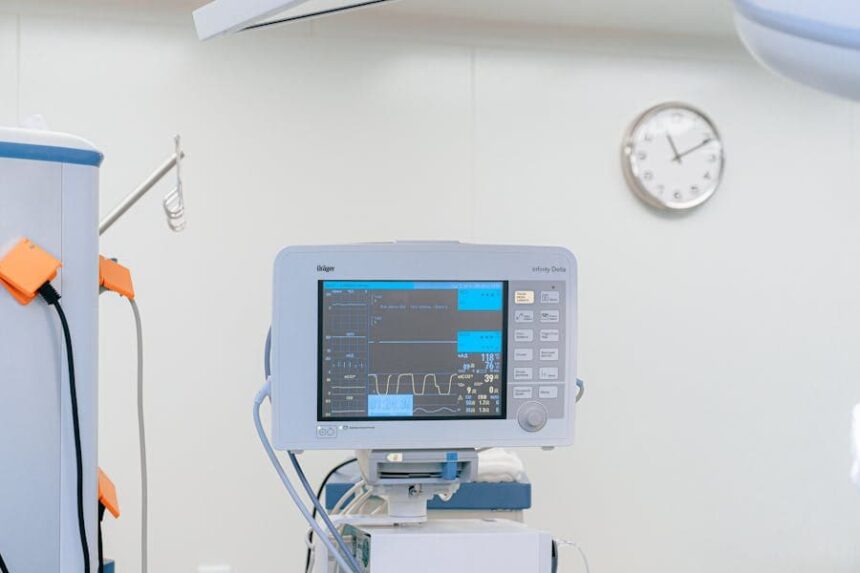Most people think of hospitals as places where doctors treat patients and nurses give care. But a lot more happens behind the scenes to keep a hospital running smoothly. Every day, hospitals manage hundreds of tasks at once—often without patients even noticing. From scheduling staff to tracking supplies, many parts of a hospital must work together, or problems can happen quickly.
This article explains what goes on in the background—things most people never see. These tasks may not get much attention, but they are just as important as medical care. Let’s look at the key areas that help hospitals function and stay ready for anything.
Keeping Patient Flow on Track
When someone arrives at the hospital, there’s already a system in place to figure out where they should go. Emergency rooms, outpatient clinics, and inpatient units all have different roles. Staff must decide which department can help and how fast that help is needed. If a patient needs to stay overnight, there has to be a bed ready. If someone is ready to go home, their discharge has to be processed on time so the next patient can use the space.
Coordinating this process is called managing patient flow. It requires good communication between nurses, doctors, transport staff, and case managers. Hospitals use real-time tracking tools to monitor which beds are open, who is waiting, and what steps are needed to move patients through the system without delay.
Running Operations with Strong Leadership
Hospitals don’t run without leadership. Administrators oversee budgets, set hiring goals, improve patient services, and manage legal rules. They make sure departments work together and adjust plans when challenges come up. Their role supports everyone from nurses to lab techs.
Many hospital leaders hold a Master of Science in Healthcare Management. This degree teaches them how to manage teams, control costs, and respond to fast-changing healthcare demands. While they may not interact with patients directly, their decisions shape the hospital experience for everyone.
Staff Scheduling Done Right
Hospitals run 24 hours a day, 7 days a week. That means there’s always a need for people to work evenings, nights, weekends, and holidays. Scheduling staff isn’t just about filling spots. Managers need to make sure the right people are working at the right time. A shift in the emergency room, for example, needs different skills than one in a recovery unit.
Schedulers work with department heads to build fair and reliable shifts. They also have to handle last-minute changes, sick calls, and unexpected emergencies. Having too few staff puts patients at risk. Having too many wasted resources. Striking the right balance takes careful planning and quick decisions.
Making Sure Equipment Works
Hospitals depend on machines to help with everything from taking blood pressure to doing complex surgeries. If one of these machines breaks down during a procedure, the results could be serious. That’s why hospitals hire trained technicians to check, clean, repair, and test each device on a regular basis.
These teams handle everything from IV pumps to CT scanners. They work behind the scenes, but their role is critical. Hospitals also invest in software that tracks when machines need updates or maintenance. This helps reduce breakdowns and avoid delays in patient care.
Staying Stocked with Essential Supplies
Hospitals go through a lot of supplies—gloves, masks, IV bags, cleaning products, and more. If even one of these runs out, patient care can be delayed. Supply chain workers track what’s used every day, place orders with vendors, and make sure items arrive on time. They also check that nothing has expired or been damaged.
Some hospitals use automated systems that send alerts when stock runs low. Others have dedicated teams who walk through departments and take inventory. Either way, someone is always working in the background to make sure shelves are never empty.
Preparing for Emergencies Before They Happen
Hospitals don’t just respond to emergencies—they prepare for them. Whether it’s a natural disaster, disease outbreak, or power outage, planning ahead can save lives. Emergency readiness teams develop detailed response plans that guide staff through different scenarios. These plans include steps for evacuations, patient transfers, and power supply backups.
Regular drills are held so staff know exactly what to do. These might involve fire response, mass casualty simulations, or system failures. Equipment like backup generators, mobile triage units, and emergency supplies are kept in working order at all times. This kind of preparation takes a lot of coordination but helps hospitals stay ready for any situation.
Making Cleanliness a Top Priority
Keeping a hospital clean goes far beyond basic housekeeping. It’s a core part of infection control. Sanitation crews clean and disinfect all patient areas, operating rooms, hallways, and restrooms multiple times a day. They follow strict guidelines to prevent the spread of bacteria and viruses.
Special care is taken when handling biohazard waste or cleaning isolation rooms. Staff use approved chemicals and wear protective gear to stay safe. Hospital-acquired infections can be serious, so cleanliness isn’t optional—it’s essential. These teams often work at night or early morning hours to avoid disrupting patient care, but their efforts impact everyone.
Making Sure Billing Is Accurate and Clear
When a patient leaves the hospital, they often receive a detailed bill. Behind that bill is a full team of people who make sure it’s accurate and understandable. Billing specialists use medical codes to match treatments and procedures with insurance claims. They work closely with doctors and nurses to confirm the details.
These teams also speak with insurance companies to handle approvals and resolve disputes. If something is denied, they find out why and help correct it. Patients often call with questions about charges, and staff must explain things clearly. This work affects both the hospital’s finances and the patient’s trust in the system.
Hospitals are busy places, but what keeps them working isn’t just medical staff—it’s a full team of support workers, planners, and leaders. Every clean room, stocked shelf, working machine, and organized file helps deliver care safely and efficiently. Most of these tasks happen quietly in the background, but they play a huge role in what patients experience.
By understanding what happens behind the scenes, we gain a new respect for how complex hospital systems really are. It’s not just about what you see in the room—it’s about the many people and processes working together to make sure every patient gets the help they need, when they need it.




